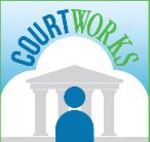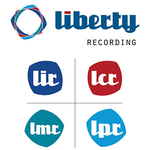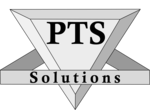What Is Court Management Software?
A complete instrument for automating and streamlining the procedures involved in running courtrooms and cases is court management software. This kind of software was created especially to satisfy the particular requirements of judges, court administrators, and other legal professionals. It enables them to effectively manage every facet of case management, from organizing hearings and maintaining case files to keeping track of court costs and producing reports.
Fundamentally, court management software is a robust database that houses all pertinent data about court cases, including case numbers, parties, and significant dates. Then, this data is readily available and searchable, which greatly facilitates court officials' ability to promptly obtain the data they need. The scheduling functionality is one of the most important aspects of court administration software.
This prevents multiple bookings and guarantees that cases are heard on time by enabling court administrators to effectively plan hearings and manage courtroom availability. Additionally, it may automatically remind all parties concerned, which lowers the possibility that hearings would be missed. Additionally, there are strong document management features in court management software.
As a result, all court-related papers, including pleadings, subpoenas, and judgments, can be safely stored and arranged in one place. Additionally, it makes it simple for users to exchange and work together on these documents, which enhances court officials' efficiency and communication. Court administration software may provide further tools like financial management, jury management, and electronic filing capabilities in addition to these essential elements.
These characteristics have the potential to significantly increase the general effectiveness of court operations and, eventually, aid in the prompt administration of justice. Features including ease of use, customer service, and compatibility with other court system software should all be taken into account while searching for court administration software. Courts may greatly increase case handling accuracy and efficiency with the correct court administration software, which will enhance overall operations and satisfy stakeholders.
What Are The Recent Trends In Court Management Software?
The way courts handle their administrative duties and procedures has rapidly changed in recent years. In order to modernize and streamline the court system, there is now a greater need for smooth and effective court management software. We will go over the most recent developments in court administration software in our buyer's guide, which buyers should take into account while weighing their alternatives.
1. Cloud-Based Solutions: The move to cloud-based solutions is one of the main trends in court administration software. This makes it possible for courts to obtain essential data and services at any time and from any location. Additionally, cloud-based solutions are more cost-effective, scalable, and secure.
2. Mobile Applications: Court management software suppliers are creating mobile applications to meet the demands and preferences of contemporary court users as a result of the increase in mobile usage. Judges, attorneys, and court employees can access and handle case information while on the go with the help of these programs.
3. Artificial Intelligence (AI): Court management software is starting to use AI more and more. It can help with things like scheduling, document review, and case prediction, which will lighten the workload and increase efficiency for court employees.
4. Integration With Other Systems: Courts frequently deal with a variety of databases and systems, which can result in inaccurate and redundant data. Integration with other systems, like e-filing platforms and third-party databases, is a recent trend in court management software that guarantees accurate and smooth data transfer.
5. Automation: Courts may now automate time-consuming and repetitive procedures thanks to automation, a major trend in court management software. Courts save a great deal of time and money as a result, and accuracy is also increased.
6. User-Friendly Interfaces: In response to the growing emphasis on user-friendliness in courts, court management software suppliers have created interfaces that are easy to use and require little training. This enables employees to become more proficient with the software and swiftly adjust to it.
7. Collaboration And Communication Capabilities: To enhance communication between judges, attorneys, and court employees, contemporary court management software incorporates collaboration and communication capabilities like video conferencing and instant messaging. To sum up, current developments in court administration software emphasize the provision of effective, integrated, and user-friendly solutions that make use of automation, artificial intelligence, and cloud computing. When assessing court management software solutions, buyers should take these trends into account to make sure they are investing in a solution that will satisfy their court system's present and future requirements.
Benefits Of Using Court Management Software
The usage of court management software has grown essential as courts deal with a lot of sensitive data and a lot of cases. It is a useful tool for any court system since it guarantees correctness, increases efficiency, and simplifies procedures.
1. Better Case Processing: By automating manual processes like data entry and filing, court management software improves case processing efficiency. This expedites the procedure and lowers human error, enabling situations to be handled quickly.
2. Simple Information Access: All case-related data is kept in a single database by Court Management Software, which makes it simple for authorized staff to access. This improves productivity and saves time by doing away with the need to go through physical files.
3. Safe Data Storage: To prevent unwanted access to sensitive data, the software has strong security features. By limiting access to the material to authorized individuals, it lowers the possibility of data breaches and preserves the confidentiality and integrity of judicial processes.
4. Simplified Scheduling: Features in court management software make it possible to schedule court appearances and sessions effectively. By doing away with manual scheduling, it lowers the possibility of confusion and double booking.
5. Streamlined Communication: Court employees, judges, lawyers, and other case stakeholders can communicate easily thanks to the software. Because there is no longer a need for back-and-forth communication, coordination and collaboration are made simpler.
6. Effective Record-Keeping: By doing away with paper-based record-keeping, court management software lowers the possibility of misplaced or lost data. The digital storage of all case-related records and documents facilitates the management and retrieval of crucial data.
7. Data Analytics And Reporting: The program offers analytics on case load, performance, and other crucial indicators in addition to producing comprehensive reports. Court administrators can use this to pinpoint areas for improvement and make strategic decisions. A court system's operations can be completely transformed by investing in court management software. It increases productivity, accuracy, and efficiency, which eventually results in improved service delivery and greater success all around. It is a great addition to any court system because of its many advantages.
Important Factors To Consider While Purchasing Court Management Software?
There are a number of crucial aspects to take into account when buying court management software to make sure you get the best option for your requirements. This software is necessary for successful case management and efficient operations since it is made to automate and streamline court procedures. Here are some important considerations to make when buying court management software to assist you in making an informed choice:
1. Compatibility With Current Systems: It's important to make sure court management software is compatible with your current systems before making an investment. This covers any software utilized in the courtroom, including your case management and document management systems. Integration features will prevent process interruptions and enable smooth data transfer.
2. User-Friendly Interface: Effective use of any program, including court administration software, depends on its user-friendly interface. To save time and effort while training your employees to use the software, look for a solution with a simple and user-friendly interface.
3. Customization Possibilities: It's critical to select software that provides customization choices because each court has different requirements and procedures. This enables you to customize the software to your own needs, guaranteeing that it satisfies the demands of your staff and court.
4. Features And Functionalities: It is essential to have a thorough understanding of the features and functionalities that are included in court management software. Case tracking, document management, scheduling, and reporting capabilities are a few essential things to search for. Select software that best suits your court's needs by taking your unique requirements into account.
5. Data Security: When selecting court administration software, data security must be given first priority because courts handle sensitive data. To safeguard your data and stop unwanted access, make sure the software has strong security features in place.
6. Support And Training: There is a learning curve associated with implementing any new program, so it's critical to take the software provider's support and training offerings into account. To guarantee a seamless transfer and the best possible use of the software, look for a provider that provides thorough training and continuing technical support. You may choose the best court management software for your court by taking these things into account. Choose a solution that will help you enhance productivity, streamline your procedures, and ultimately help you offer the public better services while keeping in mind your unique demands and requirements.
What Are The Key Features To Look For In Court Management Software?
It's crucial to search for a few essential aspects when thinking about buying court management software to make sure it fits your demands and facilitates effective court operations. Case management, document management, calendar scheduling, and reporting capabilities are some of these functions.
1. Case Management: Strong case management capabilities are one of the key components of court administration software. Creating and monitoring cases, managing case data and documents, assigning and monitoring tasks, and setting up alerts and reminders are all included in this. Additionally, it should be adaptable to your court's unique workflow and procedures.
2. Document Management: A good court management software should have strong document management features because courts need to manage their documents effectively. This includes the capability of centrally managing and storing all case-related documents, guaranteeing their security and ease of access. To make document management procedures more efficient, it should also include version control, document tracking, and search features.
3. Calendar Scheduling: A thorough calendar and scheduling capability should be included in the software because court dockets and scheduling can be complicated. Creating and monitoring court dates, hearings, conferences, and other events is part of this. To prevent schedule overlap and guarantee the effective use of time and resources, it should ideally incorporate a scheduling conflict resolution tool.
4. Reporting: To track and analyze court operations, make well-informed choices, and pinpoint areas for improvement, effective reporting skills are crucial. Seek out court management software that allows you to develop bespoke reports in addition to pre-built ones. To make it easier for you to interpret the data and identify trends, it should also have data visualization capabilities.
5. User-Friendly Interface: Because court employees and other users with different degrees of technical skill will use Court Management Software, it is imperative that it have an intuitive user interface. The program should be simple to use and intuitive, with clear instructions and on-screen assistance as required. To guarantee that your workforce makes the most of the software, training and support should also be offered.
6. Security And Accessibility: Security and accessibility are essential since courts handle sensitive data and documents. Only authorized individuals should be able to access sensitive data thanks to the software's suitable access restrictions. Additionally, it should include safeguards against security threats and data breaches.
7. Integration: You may increase productivity and expedite procedures by integrating Court Management Software with other systems, such e-filing. Take into account if the program has an API for bespoke integrations or if it can interface with other crucial systems that your court employs. To sum up, when assessing court management software, be sure to take into account the aforementioned essential characteristics to make sure you select a solution that enhances operations and fits the unique requirements of your court. These capabilities in a comprehensive software program can boost productivity, save time, and enhance your court's overall operation.
Why Do Businesses Need Court Management Software?
Lawsuits are unavoidable in the fast-paced commercial environment of today. Companies of all sizes and sectors are susceptible to legal issues, ranging from contract disputes to employee lawsuits. Court administration software is useful in this situation. Court management software is essentially a tool that assists companies in organizing and streamlining their legal procedures. It is intended to streamline the administration of court cases, including scheduling hearings, keeping track of and submitting legal papers, and coordinating communications with judges and attorneys. What makes court management software necessary for businesses? These are the main explanations:
1. Effective Case Processing: Court cases necessitate a large amount of documentation, paperwork, and important information that must be arranged and easily available. By streamlining these procedures, court management software helps companies save time and effort while handling legal matters. This results in quicker processing times and more effective handling of legal issues.
2. Centralized Case Administration: All case-related data is kept in a single database by court administration software, which makes it simple for authorized people to access. This lowers the possibility of missing or lost papers by doing away with the necessity for physical file storage. Additionally, it facilitates easy teamwork, guaranteeing that everyone is aware of the most recent case developments.
3. Security And Compliance: Strict adherence to rules and timeframes is necessary for legal procedures. Important due dates, such filing dates and court appearances, are guaranteed to be met thanks to court administration software. Additionally, it provides a safe platform for keeping private data, lowering the possibility of data breaches and guaranteeing adherence to legal requirements.
4. Cost Savings: Due to high lawyer and court fees, litigation can be costly. By eliminating the need for paper-based documentation, cutting down on administrative duties, and monitoring case-specific expenditures, court administration software helps businesses save money.
5. Real-Time Updates: Businesses can receive real-time updates on the status of their legal matters thanks to court management software. It enables them to keep tabs on case developments, keep track of deadlines, and remain updated on any modifications. This makes it possible for companies to decide wisely and respond quickly when needed.
How Much Time Is Required To Implement Court Management Software?
Depending on a number of variables, including the court's size, the intricacy of the procedures, and the level of customization required, the time required to implement court administration software might vary. The software's complete implementation and functionality may take three to six months on average. Data migration, which entails moving current data from outdated systems into the new program, is the initial stage in putting court administration software into use.
Depending on the volume and complexity of the data, this could take several weeks. The software must then be configured to meet the court's unique requirements, which may take a few more weeks. An essential component of putting court administration software into practice is training. For the program to be used effectively, it is imperative that all pertinent staff members receive sufficient training.
Depending on the software's complexity and the number of users, training may take a few days to several weeks. To guarantee a seamless transition, parallel procedures involving the simultaneous use of the old and new systems must be carried out during the implementation phase. Several weeks to a month may pass, depending on how complicated the procedures are.
It's also important to remember that court management software is an ongoing investment that needs to be updated and maintained on a regular basis in order to work properly. Although the entire implementation process may take three to six months, any court would find the advantages of improved productivity and reduced procedures to be well worth the cost.
What Is The Level Of Customization Available In Court Management Software?
From organizing case files to setting up hearings, court management software is a specialist tool that helps courts and legal practitioners run their daily operations more efficiently. The degree of customisation that a court management software provides is a crucial factor to take into account. What degree of customisation can court management software offer, then? The degree of customization available in various court administration software systems might vary significantly.
While some might provide more sophisticated choices for customizing the software to meet your unique needs, others might only allow simple modification, like adding or removing particular features or fields. The degree of customisation may vary depending on whether the program is on-premises or cloud-based. Since updates and modifications may be made remotely without affecting service, cloud-based software usually offers greater customization options.
On the other side, non-technical users may find it more difficult to customize on-premise software since it may need IT support. The scale and complexity of your court's activities are other important considerations. Compared to larger, more complex courts, smaller courts with simpler procedures might not need as much customisation.
As a result, it is crucial to evaluate your unique requirements and select software that can be customized to meet them. Examining the features and tools that can be altered is crucial when assessing a court management software's degree of customisation. These could include scheduling, reporting, document management, case management, and more. Make sure the program allows for modification in the areas that are most crucial to the functioning of your court.
Finally, the degree of customization can also be significantly impacted by the software provider's training and customer support offerings. You can maximize your software utilization and take advantage of the customization choices with the assistance of a provider that provides thorough training and support.
Which Industries Can Benefit The Most From Court Management Software?
A technology-based solution called court management software was created especially to help courts and legal institutions increase their overall efficiency and streamline daily operations. Many different businesses can profit greatly from this potent instrument, and the secret to success is choosing the program that best suits your company's demands. Which sectors stand to gain the most from Court Management Software, then? Let's examine this more closely:
1. Public Institutions And Government Agencies: A large number of cases and legal papers are handled by public institutions, including government offices and judicial systems. These businesses may automate their procedures, cut down on paperwork, and enhance departmental cooperation with Court Management Software. Large volumes of data may be stored and managed by the software, which also makes case information easily accessible, allowing these organizations to improve transparency and speed up services.
2. Legal Practices: Numerous cases, clients, and legal papers are handled by law firms. With the use of court management software, they can efficiently manage their workload and check the status of each case by keeping all of their calendars, papers, and cases in one place. Additionally, the program facilitates effective communication between lawyers and their clients, increasing client retention and satisfaction.
3. Corporate Legal Departments: To manage their legal matters, large organizations frequently have internal legal departments. These departments can manage legal problems more efficiently and effectively with the use of court management software. They can consolidate all corporate legal documents using the software's document management system, which makes it simpler to monitor contracts, copyrights, and other legal documents.
4. Legal Non-Profit: Organizations Legal aid clinics and other non-profit organizations handle a lot of cases and clients. These firms can use court management software to automate processes like document generation and appointment scheduling, track client information, and manage their cases. This enables them to concentrate on offering worthwhile legal services to people who are most in need of them.
5. Centers For Arbitration And Mediation: Centers for mediation and arbitration are essential for settling conflicts outside of the established legal system. These centers can improve the efficiency and organization of the dispute resolution process by using court management software to keep track of cases, timetables, and documents. Additionally, it can support the preservation of the center's impartiality and case confidentiality.
Conclusion
To sum up, selecting the appropriate court administration software is an essential choice for every court or legal practice. It can have a major effect on their operations' overall success, productivity, and efficiency. Buyers should take into account their individual requirements and objectives while comparing various solutions, in addition to the software's functionality, customization possibilities, security features, and support services.
The software's smooth integration with current procedures and systems must also be guaranteed. Customers should also carefully examine each software's pricing structures to see whether they fit into their long-term goals and budget. To learn more about the software and its features, it is also advised to ask the software suppliers for references, free trials, and demos.
In the end, buyers can make an informed choice and invest in a solution that best fits their particular needs by carefully investigating, contrasting, and evaluating different court management software options. This will ultimately improve the efficiency and effectiveness of managing court operations.






















